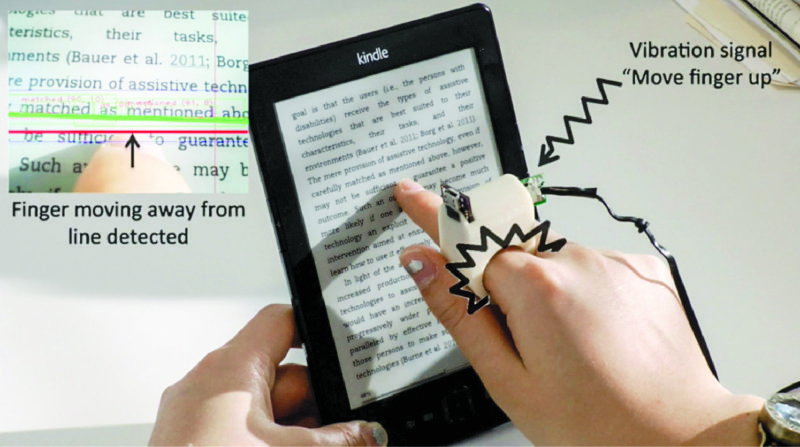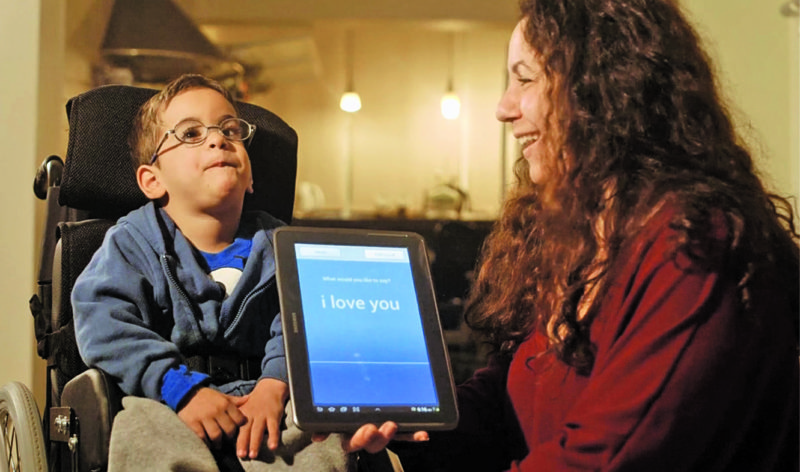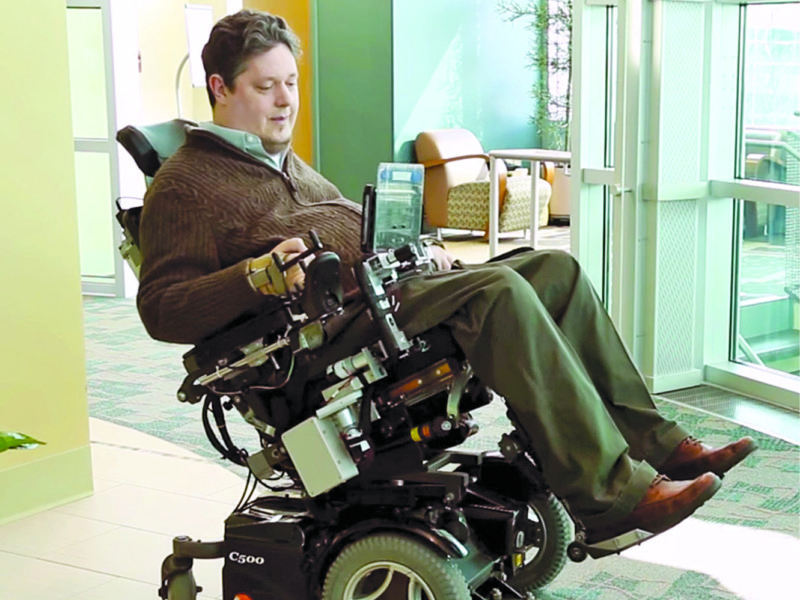This year, the government of India dedicated the National Science Day to the theme “science and technology for specially abled persons.” The idea was to encourage innovation, awareness and reach of accessibility solutions to specially-abled people in the country.
The differently-abled population in India is estimated to be 100 million, half of which is under the age of 30. This indicates a huge need for assistive technology products. The government plans to work together with corporates, educators, NGOs and the differently-abled people so as to promote availability of solutions that can help differently-abled people to lead independent lives.
People with disabilities meet barriers of all types. However, with the help of assistive technology, they are now able to do things that would have never been possible before—from switching on a light to having a voice to express themselves.
Technology has always lent a helping hand for people with visual impairment, speech impairment and motor disabilities. The mobile technology, in particular, has provided the foundation for development of a lot of apps and gadgets that can help ease the difficulties people with disabilities face on a daily basis.

Devices for people with visual impairment
Dot. It is the world’s first Braille smartwatch. A practical, wearable solution, it is more affordable than regular e-Braille devices which may cost thousands. Dot helps the visually impaired to access messages, tweets and even books anywhere and at any time. It can connect via Bluetooth to any smartphone, then retrieve and translate the text (from an email or messaging app) into Braille for its owner.
Braille ebook reader
A Kindle-style e-reader, it lets visually impaired people read easily. Alphabets are represented as raised bumps. So the visually impaired can read by tracing lines of raised bumps with the help of their fingertips. The reader also helps to understand graphics and figures.
Tactile wand electronic stick
It lets visually impaired people to determine the objects that come in their way. As soon as the user approaches an object, the stick starts vibrating. The closer the user comes to the object, the greater the vibration.
FingerReader
This wearable tool assists in reading as well as translating text. The user can wear the device on a finger, then point it to a body of the text, one line at a time. The small camera on the FingerReader scans the text and gives real-time audio feedback of the words it detects. It also notifies the reader via vibrations when the user is at the start of a line, end of a line, moving to a new line or moving too far away from the text baseline.
Be My Eyes
This iPhone application connects the visually impaired with sighted volunteer helpers from around the world via live video connection. It is an easy way to seek help for simple tasks like checking the expiry date on a milk carton or navigating surroundings. Volunteer helper receives a notification for help and a live video connection is established. If the volunteer is too busy, the app can find someone else to step in and help.
Sesame phone
It is a touch-free smartphone designed for people with motor disabilities. It works by tracking the user’s head movements, using the built-in, front-facing camera on the phone. These tracked movements are combined with computer vision algorithms to create a cursor that appears on the screen of the phone.
The on-screen cursor is controlled by the position and movement of the user’s head, and supports even minimal movements. Touch, swipe, browse, play and download—it’s all possible using the Sesame smartphone. Voice control adds a real hands-free experience to the phone.
Kapten PLUS personal navigation device
Traveling alone is a challenge for the visually impaired. There is always the possibility of taking a wrong turn or getting disoriented in the shuffle of busy pedestrians. The Kapten PLUS personal navigation device is a very small GPS locator designed for people with low vision.
As users walk down the street, the device speaks out directions and locations, so users always know where they are and where they’re heading.
In addition, users can plan and store routes and tag locations for use again. Designed as an affordable GPS accessory (and not a total replacement) to cane or guide-dog travel, the device offers security, confidence and a wealth of useful information, allowing visually impaired people to travel independently without the fear of getting lost or wandering in the wrong direction.
Car with smart feedback
Engineers are developing a car that can actually be driven by the visually impaired. The aim is to integrate several computer systems, sensors and cameras to observe the environment around the vehicle and provide alternate forms of sensory input, including sound and vibration.
This may include seat vibrations of various strengths and locations, pulsing vibration signals in gloves worn by the driver, auditory alerts from a headset and a sort of screen that paints a virtual picture of the surroundings using compressed air.
Smart glasses
Oxford University researchers are developing a pair of glasses that gives people with limited vision an aid that boosts their awareness of what’s around them. With extra information on who or what’s around them, they can walk around unfamiliar places confidently and with greater freedom.
The gadget consists of two small cameras, a gyroscope, a compass, a GPS unit, a headphone and transparent OLED displays. Using it, visually impaired people would be able to distinguish between light and dark. The glasses make anything a little brighter when it gets closer to the wearers, so they can discern people and obstacles.
Devices for people with hearing impairment
Cochlear implant
This little device continues to evolve with advancements in software and hardware. The single-channel implant provided mostly static, while early commercial implants with five channels gave some indication of cadence and rhythm.
Today’s cochlear implants, however, have more than twenty sound channels, allowing users to hear with much better clarity. The implant is still far from perfect, with background noise continually being a problem.
However, the technology has advanced to such a point now that voices can be heard with enough clarity to be readily understood and identified, making verbal communication possible and productive.
UNI
It is a two-way communication tool for hearing-impaired persons that relies upon gestures and speech technology. It works by detecting hand and finger gestures with its specialised camera algorithm, then converting these into text in a very short time to provide meaning to a given sign language. A voice recognition software converts speech into text for two-way communication. UNI also allows users to create their own sign language with its sign builder, so it is easy to add custom language to dictionaries. It is a subscription-based app with two versions, one requires a data connection while the other doesn’t.
Transcence
Transcence is a mobile app that makes group conversations possible for hearing-impaired people. In a conversation, using the microphone of each participant’s smartphone, the app catches what the participant is saying, then converts it into text in real time.
All speakers are assigned corresponding text bubbles, differentiated by colour, just like what we would find in a regular group messaging chat room.
Devices for people with speech impairment
DynaVox EyeMax
This device gives paralysis, cerebral palsy and stroke victims the ability to participate in spoken communication using only their eyes. Using a sophisticated eye tracking system, users can interact with an on-screen keyboard to enter words and phrases. These words and phrases are then translated into spoken text using text-to-speech mechanism of the device.
In addition to the on-screen keyboard, the language software on the device offers hundreds of pre-defined phrases and words, which can be selected from lists or chosen via pictures and scenes. This makes the device instantly accessible to young children and people with mental disabilities who may be unable to grasp written language.
Talkitt
This application helps people with speech and language disorders to communicate with clarity. It translates unintelligible pronunciation into understandable speech, so the other person can understand what the user said.
It works by learning the user’s speech patterns first, creating a personal speech dictionary. Then it identifies and recognises the unintelligible pronunciations, translating them into speech people can understand.

Technologies for others
Axs map
Many public places are not equipped with facilities like wheelchair ramps and wheelchair-accessible restrooms. This causes inconvenience to those who need a wheelchair to move around.
AXS Map is a crowd-sourced map that provides information about wheelchair-accessible ramps and restrooms in public places such as restaurants, hotels and shopping malls. Star ratings help users know how well-designed these facilities are.
Assist-Mi
This app connects service providers and caregivers with specially abled users on the go. Users can get assistance in real time at the touch of a button. Services include help in getting to work, shopping and travelling.
The Mi-Profile feature of the app lists users’ needs so service providers know what to do when assistance is requested. The app also supports two-way communication and GPS for better information on location.
Liftware
It is a self-stabilising handle that can be attached to eating utensils like forks and spoons. It is very helpful for people with Parkinson’s disease or other forms of motion disorders that cause hand tremors. Liftware stabilises up to 70 per cent of the disruption and helps reduce the amount of spillage before food reaches the patient’s mouth.
The Liftware system comes with a charger and three utensils, a spoon, a fork and a soup spoon in addition to the handle. Depending on how long the user’s meals last, Liftware lasts for three to six meals between charges. The handle can be wiped clean, while the spoons and fork can be washed like a normal utensil.
HeadMouse Nano
HeadMouse Nano replaces the standard computer mouse for people who cannot use or have limited use of their hands. Mounted on the top of a laptop’s screen and showing an onscreen keyboard, it tracks and translates natural movements of the user’s head into directly proportional mouse pointer movements—move your head and the mouse pointer moves as well.
The HeadMouse has a wireless optical sensor that tracks a tiny disposable target worn by the user on forehead, glasses or even a hat. With HeadMouse Nano’s high tracking resolution, users can perform such tasks as drawing, photo editing, graphic illustration and computer-aided design.
Bionics
Advances in 3D printing and bio-electronics are allowing replacement of lost limbs with prosthetics, giving specially abled people extra functionality. Bionics enables prosthetic limbs such as hands that can be controlled via a mobile app.
DEKA robotic arm
This highly sophisticated and highly functional prosthetic arm for injured people has such precision and control that the user can peel a grape.
The arm supports a number of customisable controls and modular components, making it easy to tailor to users’ individual needs, whether they require only a hand or an entire arm and shoulder socket. Another promising feature of the arm is its sensory feedback system.
RoboDesk
It is a special sensor device for people in wheelchairs who face the problem of ‘pressure sores.’ Pressure sores are caused by sitting or lying in the same position for too long. This decreases blood circulation to the area under pressure, eventually leading to a breakdown of the skin in that area.
The RoboDesk sensor device fits snugly on a wheelchair seat and connects to a smartphone app via Bluetooth. If the app notices that the pressure over an area of the skin hasn’t changed over a certain period of time, it will notify the user as a reminder to move.
Developers of the device are contemplating a version for hospitals, where critical care patients are at an increased risk of developing bedsores.

HeadMouse Extreme
It replaces the standard keyboard for those who can’t move their hands. It translates the head movements into proportional mouse pointer movements, performing the respective operation.
Gesture Search
This Google app for Android helps users to find something quickly on their Android device. Users need to draw a single initial character to get a quick list of matching items on their device. The app helps users to quickly navigate through contacts, applications, settings, bookmarks and much more with utmost ease.
Key to success
People with disabilities often benefit from technology developed for regular consumers, but it also works the other way around. It has been found that when manufacturers design with special needs in mind, their products get better for everybody.
While it’s a great news for specially abled people that tech companies are taking interest in making products for them, there’s still a long way to go as high cost of these products remains the biggest barrier to their adoption.










